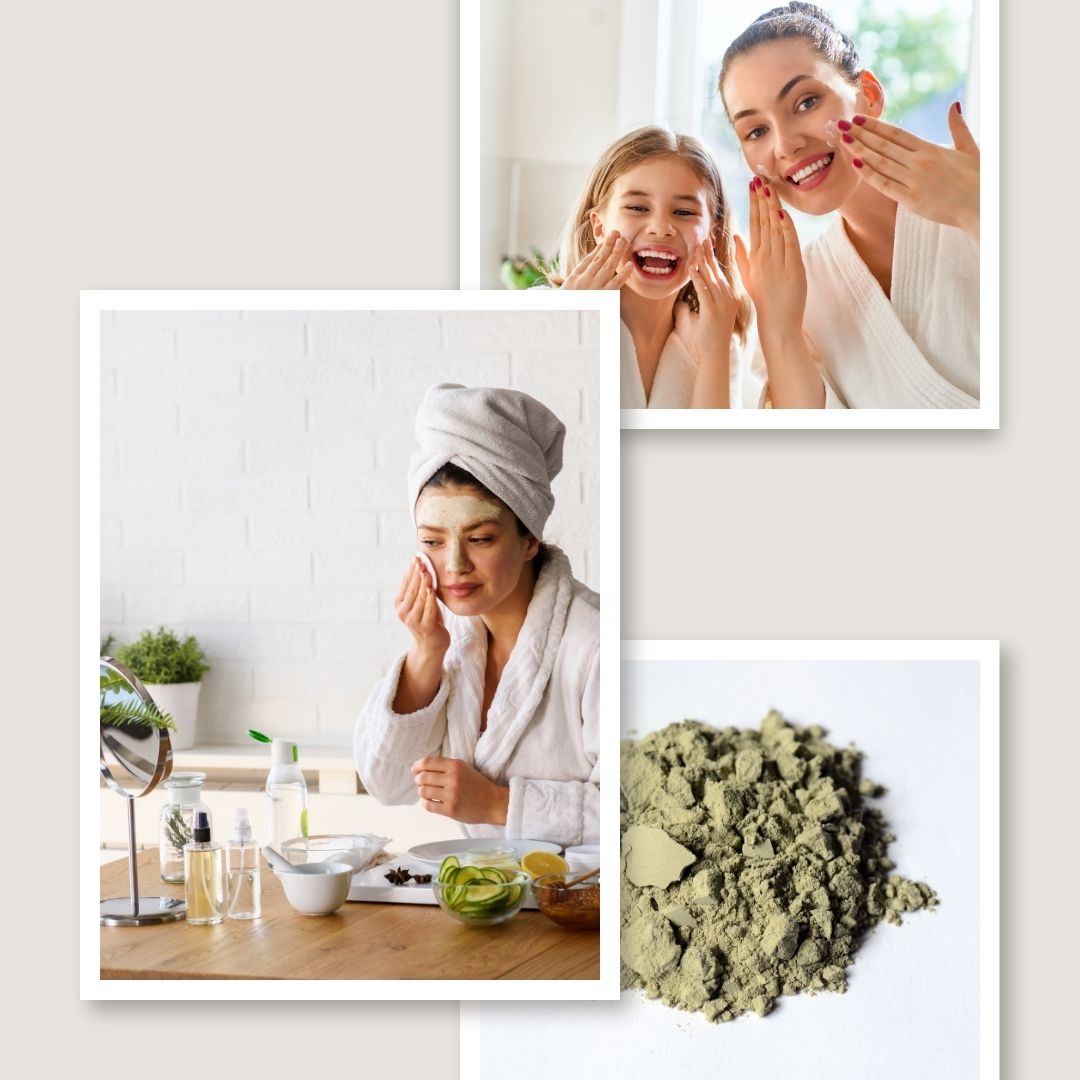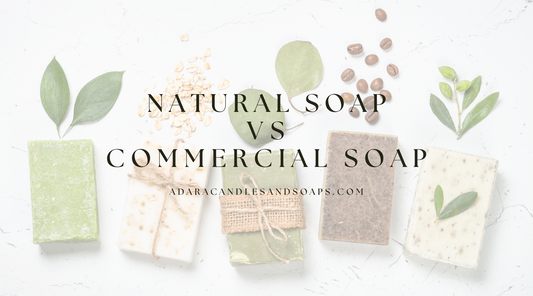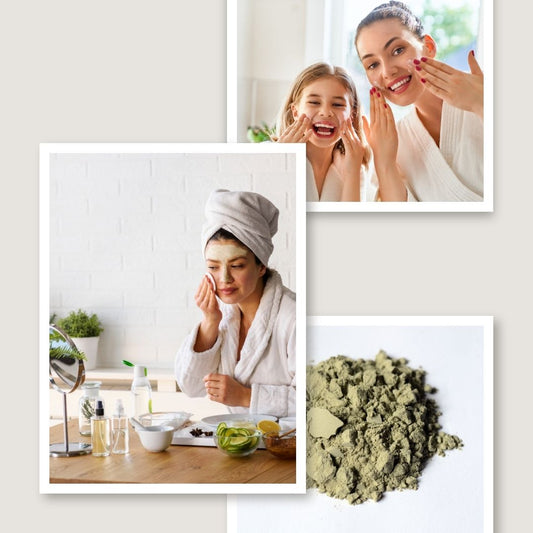
Clay benefits for your skin
Share
The Most Surprising Ingredient in Soap-Making: All About Clay
When I first started making hand-crafted soap for my friends and family over a decade ago, I found many things about the process and history of soap-making fascinating.
The fact that soap has been around for over 4000 years, for instance, is pretty amazing. And when it comes to the U.S., the first major company to mass-produce soap was launched at the beginning of the 19th-century by William Colgate. Yes, the same guy who went on to create one of the most popular brands of toothpaste, but I digress.
What I truly didn’t expect was to find out that clay is one of the ingredients used in soap
making. I always thought clay was reserved for pottery. You remember that hot scene from the movie Ghost with Demi Moore and Patrick Swayze? That kind of stuff.
Who would have thought a material that is molded, shaped, and fired at high temperatures to create beautiful vases or pots could also help moisturize and detoxify your skin when you are casually washing your hands? Mind. Blown.
Ok, let’s get a few things straight. The clay used in pottery is not exactly the same as the clay used in soap production. They do come from similar natural resources, but are processed differently.
Typically, pottery clay is much coarser and has larger particles. Clay for soap-making is finer, more refined. It is washed and dried to remove all impurities that could irritate the skin or affect the structure of the final product.
What I have in my studio are clays specifically made for soap-making. They come in the form of powder that I carefully mix into the oil and lye solution once it has fully emulsified. But we don’t need to go into the nitty-gritty of my work process. The important part is what soap made with clay can do for you. Let me tell you all about it!
Why Do I Add Clay to My Soaps?
If you think about it, clay is not an essential ingredient in soap-making. It’s something extra, something you would only add if you are crafting on a small-scale to go above and beyond. You won’t find clay on the ingredient list of a mass-produced soap bar. So why do I use it then? For multiple reasons. Here are a few!
Clay is a natural colorant.
This is one of the most obvious reasons. Clays have beautiful earthy tones they lend to soap: light shades of green, pink, and yellow, to name a few. No need for artificial dyes.
Clay absorbs oils and toxins from skin.
Clay has an amazing property of detoxifying and deep-cleansing the skin. There’s actually a scientific reason behind it. Most clays used in soap-making are made of silicate minerals that have a negative electric charge.
On the other hand, toxins, heavy metals, and bacteria are positively charged and are attracted to the negatively-charged particles of clay. Simply put, clay acts as a magnet and pulls out toxins, bacteria, and excess oils from your skin.
Clay helps create rich lather.
Good lather doesn’t seem that important until you get a bar that simply won’t produce any substantial foam, no matter how long you keep it under water and rub it. That never happens with commercially-produced soap bars because — surprise, surprise — chemicals. Often, sodium lauryl sulfate is used. It creates strong stable foam, but has a side effect of drying the skin.
When it comes to natural soaps creating good foam is trickier. And that’s where clays step in. They produce dense and creamy lather, eliminating the need for any additives.
Clay helps extend soap’s shelf life.
Clay, of course, is no preservative in the traditional meaning of this word, but it can help to extend the life of your soap bar. It absorbs excess moisture which is good for 2 reasons. A lot of moisture leads to oils in soap being oxidized which, in turn, leads to soap going bad.
On top of that, as clay pulls extra moisture out of soap, the bar stays harder and the
degradation process slows down.
Clay Types and Their Benefits
There’s a range of clays one can use to make soap. You will hear terms like kaolin clay,
bentonite clay, French green clay, and Brazilian purple clay, to name a few. Here’s what I use at Adara!
French Clays
French clays are kaolinite-based clays that are mined in different regions of France.
French green clay is one of the most powerful clays for oily and acne-prone skin. It helps to pull out toxins and absorb excess oil from skin. Tightening pores is one of its properties, too. Rich in iron oxide, magnesium, and calcium, French green clay is what I use for my French Green Clay face and body soap bar.
French pink clay is a mixture of red and white clays and is a bit gentler than French green. It is great for sensitive and mature skin. This is what I use in my Tea Tree & Rose soap.
Brazilian Clays
Brazilian clays are also kaolin clays but, as the name suggests, they come from the mineral deposits in Brazil. Compared to French clays, they are brighter in color and gentler to skin. They are good for all skin types.
Brazilian yellow clay is particularly good for collagen production. People with dry or mature skin will benefit most from using soap with this type of clay. My Sweet Orange & Rosemary soap bar features a combination of Brazilian yellow and red clays mixed with French green clay.
Brazilian red clay stimulates circulation and improves skin elasticity. My Orange & Bergamot soap bar contains both Brazilian yellow and red clays.
Brazilian purple clay works wonders on dry and sensitive skin. It is rich in magnesium and is known for anti-aging properties. Adara’s Calming Lavender soap bar is perfect if you’d like to feel the benefits of Brazilian purple clay for yourself.
Activated Bamboo Charcoal
Charcoal is no clay, but I have to mention it because I use it in my Lavender & Charcoal soap bar in place of clay. While they are not the same, to a certain extent their properties overlap. Charcoal is also good for detoxifying and deep-cleansing. It is full of antioxidants which are good for protecting the skin from environmental damage.
And there you have it. All the clays I use in my studio and their benefits. I hope you are as fascinated as me by this miracle of nature and all the good it can do for you. Next time you buy soap, do go through the ingredient list and see if you can find clay there. Or… just pop over to our shop page and select one of our handmade soap bars, all of which are made with the highest-quality clays.



